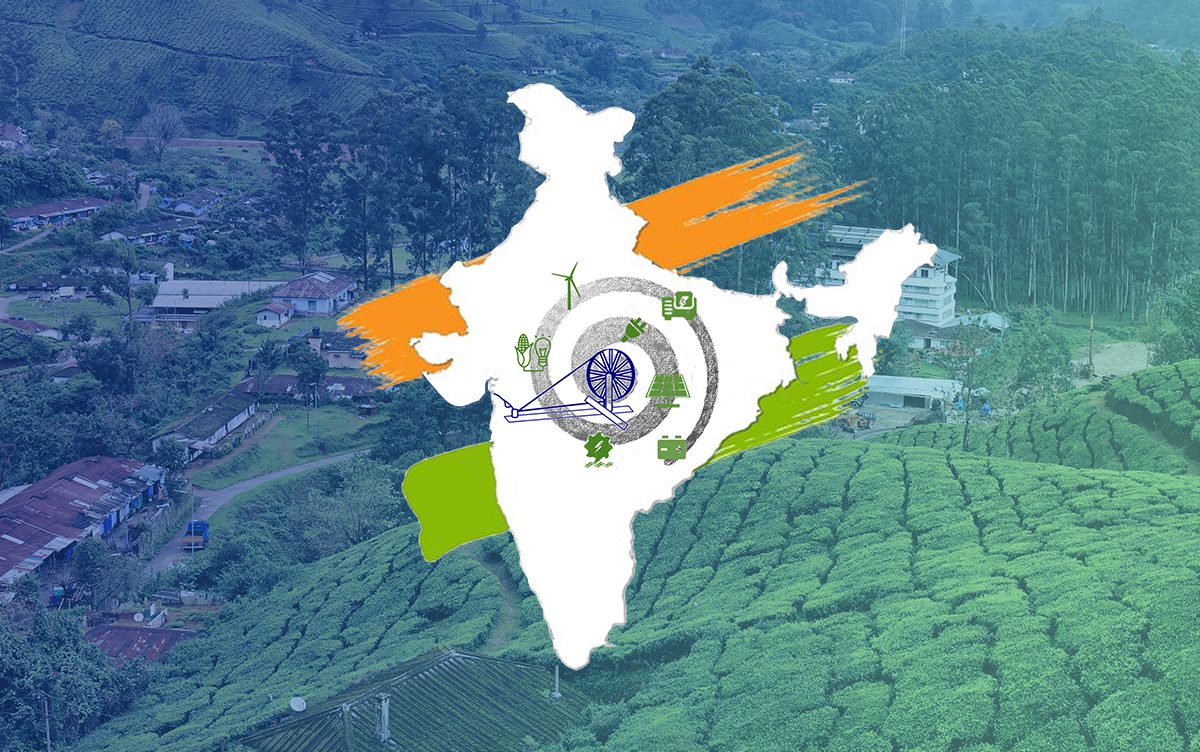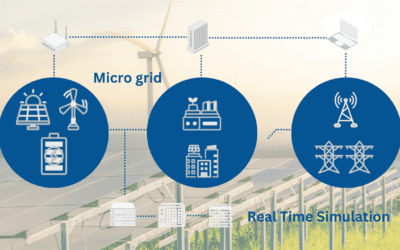Every ecosystem on the planet is finely balanced and tuned. Synergistic and complex hierarchies ensure that every living thing, from a rice plant through to a human family, receives the energy they need to flourish.
In the modern age, systems such as i-EM advanced analytics are taking the guesswork out of achieving and maintaining balanced ecosystems, by predicting the behaviour of the various elements of a system and monitoring their energy usage. By doing this, it becomes easier to predict future requirements.
What is a microgrid?
In predominantly remote and/or off-grid locations, setting up and maintaining energy infrastructure is not only challenging but expensive. To achieve maximum coverage without allowing costs to spiral out of control, microgrids have been found to be far more effective than a single major system.
These autonomous energy production units are designed using renewables such as wind and solar energy and storage systems coupled and adapted to the local loads. They can be managed from thousands of miles away, yet provide the end users with locally sourced energy that’s dependable, using satellite technology and data analytics.
They’re quicker to install, cheaper, and simpler to maintain, providing even remote communities with the access they need to electricity. This is exactly what MOWGLI (MicrO ReneWable Grid for ruraL Indian areas) is doing.
What is MOWGLI?
MOWGLI is a demonstration project co-funded and in conjunction with the European Space Agency Business Applications Program, and supported by India Energy Storage Alliance and the Indian company Customized Energy Solutions (CES). The aim is to examine the critical challenges and factors in delivering power to remote locations using satellite-based technology to assess the different phases of each microproject.
The challenges
Firstly, the financial risk of any major infrastructure development has to be balanced against the potential long-term profitability, as well as sustainability. Pre-analysis using satellite technology gives a far more accurate overall picture of the terrain and the most suitable form of renewable generation for the area and the requirements.
The correct sizing of the microgrids and their scale also needs to be factored in. If there is potential for a community to expand then this has to be considered so that the infrastructure can be scaled up if necessary. This way, the energy production for the community is future-proofed.
Ongoing maintenance and operations have to be a primary concern, ensuring that the system continues to work uninterrupted. And finally, regulatory considerations have to be factored in, especially in areas of special scientific interest or where unique ecosystems need to be preserved.
Why use satellite technology?
Satellite technology allows managers of microgrids to not only gather data but to monitor and maintain existing systems, ensuring that they are operating successfully. Earth observation satellites can be used for energy assessments and real-time monitoring and forecasting. Telecommunications satellites obviously have a major role to play by complementing solutions where local connectivity is either unreliable or non-existent.
The trick is to bring all of this data together to create a management system that’s reactive and responsive to changes and unforeseen challenges. MOWGLI delivers a set of services for microgrid planning, design, installation, operation and maintenance. As well as identifying optimum areas, it can run detailed load assessments and adapt to incorporate changing expectations.
Once a microgrid has been installed, the key challenge is management. MOWGLI Manager collates all the data available to enable uninterrupted management of a microgrid, ensuring load balancing is optimised and that blackouts are minimised. Real-time monitoring can also identify potential problems, enabling operators to improve fault detection and prediction.
Sustainable energy for remote regions
The result of this is a more sustainable microgrid that, by using renewables, also ensures that the planet’s fragile ecosystems are protected. Streamlining the data analysis and collection process and fine-tuning it into an intuitive and responsive system makes microgrid management easier, more efficient, and more economical.
The net result of this for end users in remote areas is stable, sustainable and affordable energy supplies, which can have huge benefits on the social advancement of local communities. Microgrids are the way forward, particularly in rural and off grid locations.
MOWGLI and systems like it ensure that the technological ‘backroom’ operations involved in setting up, installing and maintaining these microgrids are easier to manage, even from a distance. Microgrids and the MOWGLI initiative represent synergistic technology at its very best.
From siting to end-user services, i-EM suite of software and app allows to efficiently manage a microgrid project both in urban and rural areas of developing countries.
x-EM is a Software as a Service (SaaS) service that introduce intelligence in the management of the Grid Edge, improving resilience and stability of the grid.
x-EM coordinates the generation, storage and consumption of electric energy, optimizing infrastructure maintenance.
Learn more about x-EM
x-EM simulates and manages the Grid Edge.
x-EM is the solution for Commercial & Industrial prosumers (C&I) Balance Service Providers (BSP) and Distributor System Operators (DSO) for the simulation and management of the Grid Edge.
x-EM supports BSP and C&I for the plan and management of microgrid portfolio on the local DSO node.







